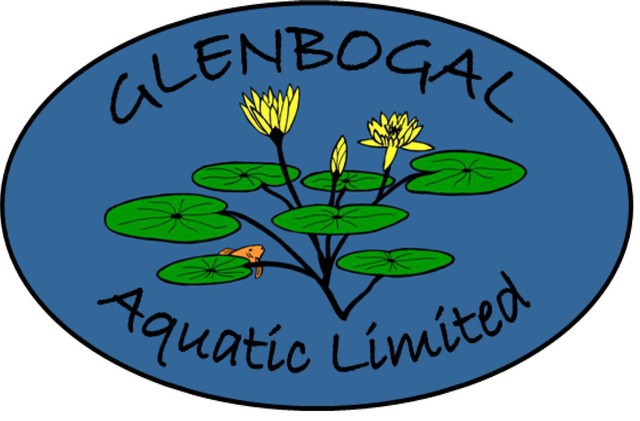Aquatic Plants
Aquatic Plants
Aquatic plants are a diverse group. An easy definition is:
Plants growing in the aquatic environment are called aquatic plants. Aquatic plants include the marine plants that grow in seawater and the freshwater plants that grow in freshwater habitat like ponds, lakes and rivers. Water lily and lotus are examples of aquatic plants.
For use in a water garden or back yard pond situations there are areas or zones that benefit the plant and the balance to your pond.
As every location of pond area is different there is no perfect rule for choosing plants. Alot comes down to the how you want your pond or water garden area to look. Some want just a pond, some want streams or water falls, some want reflection ponds, some want wildlife ponds to benefit nature. The beauty of the water garden is in the eye of the beholder.
What is needed is a basic outline of where you should plant the varieties you have chosen, so we offer the following Zone information
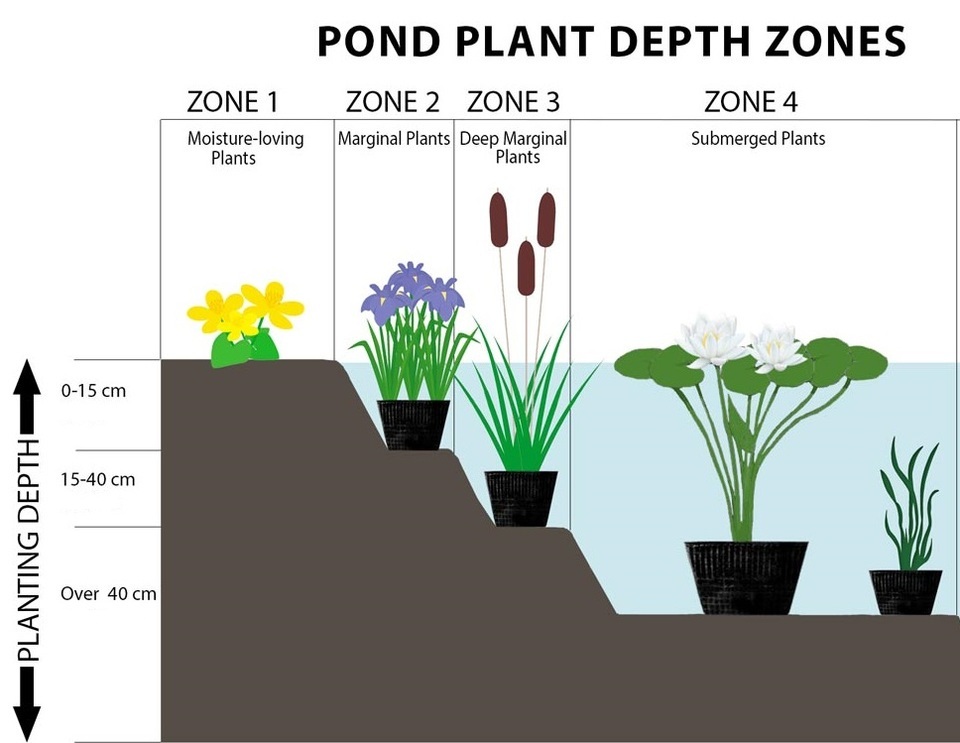
Pond Plant Depth Zones are a simplified way to organise the plants you choose.
Suggestion: If you are building or digging out your own pond to be lined with pond liner don't forget to include stepped shelf areas for the different zoned plants. Alot of plants have different depth requiement and a pre-built shelf is easier than putting plants on pots.
Zone 1:
Moisture loving plants or Bog plants
There are a large range of moisture loving plants for the edges of ponds. Depending on the mositure of the planting area options do not need to be specific aquatic plants. Your gardener, landscaper or garden centre can help with options.
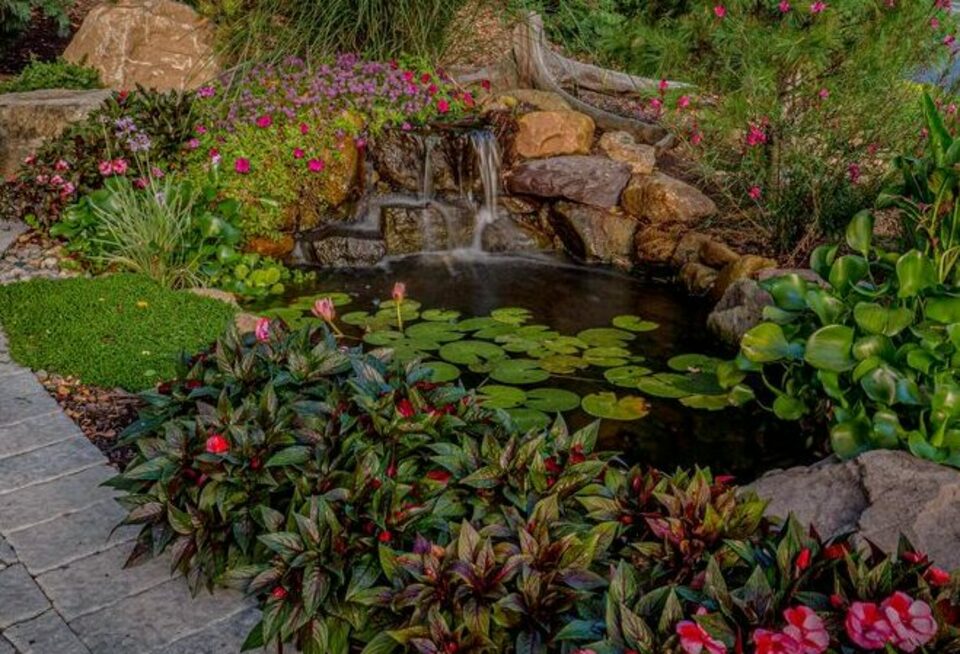
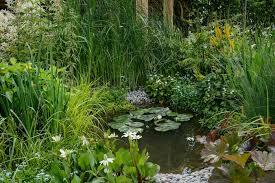
Zone 2:
Marginal Plants
Marginal plants are those which grow around the margins of the pond where the water is shallow. They usually have their soil and crown underwater, and sometimes their lower foliage as well. They are generally placed on planting shelves within the pond to a depth of up to 15cm.
Zone 3:
Deep Marginal Plants
Deep water aquatic plants are those which grow on the bottom of the pond or on the deeper shelves, so that they have 15 to 40cm of water over their crown.
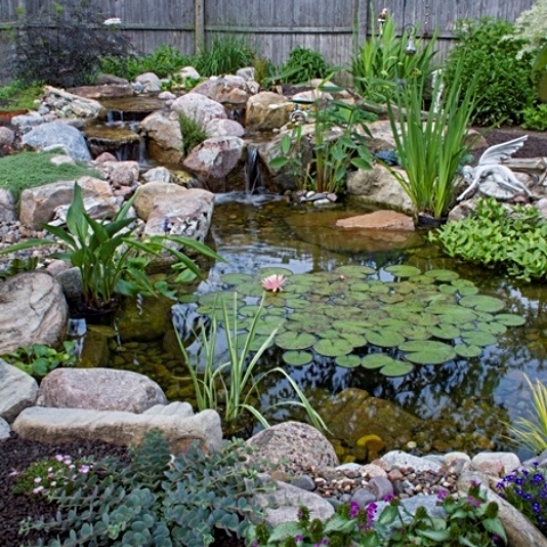
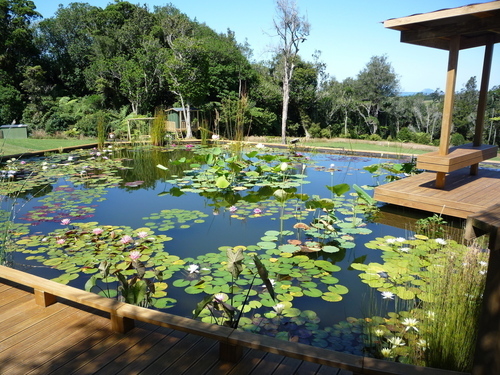
Zone 4:
Submerged (oxygenating) water plants
These varieties are the most commonly asked about. They will grow permanently under water with the majority of the foliage submersed. Many plants however will have leaves and in some cases flowers that will float on the surface.
A common name used for these plants is “oxygenators”. This name is somewhat confusing as they do oxygenate the water by day but they also produce carbon dioxide in the water at night. We prefer to call them submerged plants.
Water lilies are included in the Submerged plant zone - we have provided a separate information page for them.
Floating plants and
Pest Plants in New Zealand
If you have been investigating the internet for plants for ponds, you will have come across a range of Floating plants regularly used in the UK and United States.
Due to the ease of self propogation of floating plants in the New Zealand climate you will find that a large number of floating plants detailed overseas are actually listed on the New Zealand Plant Pest accord as noxious or illegal.
To give you a better idea we have provided a link to the Pest Plant Account (Ministry of Primary Industry) for you to reference.
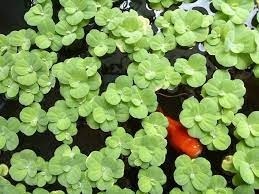
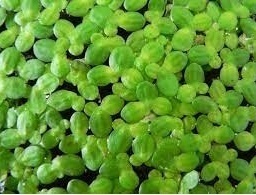
Duckweed (Lemna Minor)
Duckweed is a small free-floating plant that can cover the surface of wind-protected fertile waters. It is a native species and widespread throughout New Zealand. L. minor is characterised by its 2 to 4 small platelet leaves (3–4 mm in length)
Dispersal is usually by water fowl moving between ponds or wet lands. What ever it can stick is an easy way to get around.
Manual removal or Ecopond Duckweed control are you best defensive to control the plant
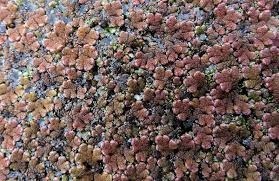
Azolla Rubra
An aquatic plant frequenting shallow water bodies such as ponds, lake margins, dams and slow flowing streams. Also present in swamps on muddy ground. Occasionally establishing in cattle troughs.
Very different from Duckweed as it is a native fern rather than aquatic plant
If you are manually removing Azolla or Lemna Minor from your pond, don't chuck it away! It is very high in nutrient, excellent for compost.
Return to Plant & Pond Care
